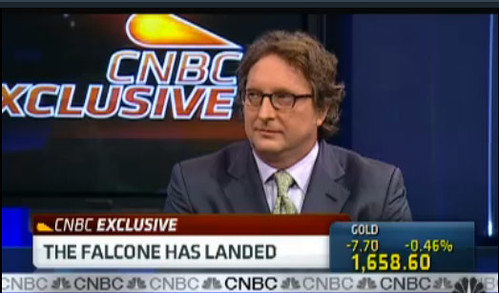
Falcone’s telecom troubles mount, as the Harbinger Fund investments in LightSquared jeopardize investors’ value and a group of investors sues in federal court.
[Wall Street Journal – 02/18/2012]
Latest Pentagon spending plans scale back push to use commercial satellites to supplement the military’s communication and space efforts.
[Wall Street Journal – 02/17/2012]
Second attempt to launch Atlas V rocket with first MUOS satellite is scrubbed due to weather conditions.
[Central Florida News – 02/17/2012]
U.S. bankruptcy court approves TerreStar reorganization plan; Dish Network prepared to close previously approved acquisitions of TerreStar and DBSD upon FCC approval of license transfers.
[Satellite Today – 02/17/2012]
Eutelsat and ViaSat receive Industry Innovators Awards from the Society of Satellite Professionals International for development and launch of their High Throughput broadband Satellites, KA-SAT and ViaSat-1.
[Sacramento Bee – 02/17/2012]
General Dynamics demonstrates first MUOS satellite-based communications on JTRS HMS Radio.
[Market Watch – 02/17/2012]
NSR free webinar coming February 22 – Military budget cuts and troop drawdowns: What’s the impact on commercial satcoms?
[NSR – 02/17/2012]
NASA selects 33 small “cubesat” satellites to fly as auxiliary payloads aboard rockets.
[SatNews – 02/17/2012]
Global Satellite USA launches Iridium Pilot, Iridium’s second-generation maritime broadband platform.
[SatNews 02/17/2012]
Satlink expands the reach of God’s Leaning Channel into Asia on the ABS1 satellite at 75 degrees East.
[SatNews – 02/17/2012]
United States, in review of future satellite needs, examines opportunities to increase international collaboration and orders from commercial providers, U.S. Air Force official says.
[Fox Business – 02/16/2012]
SES-4 successfully performs post-launch maneuvers.
[Market Watch – 02/16/2012]
Media Networks Latin American signs long-term capacity deal with SES fior multiple transponders on AMC-4 to launch new DTH wholesale pay TV service.
[SatNews – 02/16/2012]
LightSquared may be looking to Department of Defense to save its LTE network; FCC still believes satellite spectrum can be used for wireless buildout but will tread more carefully next time.
[Washington Post – 02/16/2012]
Avanti partner STM buys Ka band capacity on HYLAS 1 to enable launch of Enterprise services in Spain.
[Proactive Investors – 02/15/2012]
Comtech EF Data wins Industry Innovators Award from Society of Satellite Professionals International for MetaCarrier technology that adds carrier ID information to a reference carrier using spread spectrum technology.
[Market Watch – 02/15/2012]
Officials eye changes to GPS receivers, but move comes too late for LightSquared.
[Nextgov – 02/15/2012]
NSR reports that FCC statement all but negates years of work from both the FCC and the mobile satellite industry.
[SatNews – 02/15/2012]
Swiss to build clean-up satellites to attack the space junk issue.
[R&D Magazine – 02/15/2012]
ORBIT Communication Systems and Milano Teleport receive orders for complete C-band VSAT solution for supertankers of one of worlds leading shipping companies based in Greece.
[SatNews – 02/15/2012]
Newly announced Intellian t80W maritime satellite TV antenna system uses WorldView LNB that automatically switches polarization and frequency according to satellite tracking onto, and satellite control system intelligence and dual antenna system that allows seamless reception of TV programs on a global basis.
[SatNews – 02/15/2012]
Harris CapRock Communications signs contract to provide telecommunications systems and infrastructure for Chevron’s Big Foot platform project in the Gulf of Mexico.
[SatNews – 02/15/2012]
IO Sat one of first customers providing services on Spacecom’s AMOS-5 satellite.
[SatNews – 02/15/2012]
NASA budget request includes funding for again launching astronauts, further exploration into space, and continuing research, providing jobs and technology that will boost the economy.
[SatNews – 02/13/2012]

Google applies for FCC licenses for “antenna farm” in Kansas that hint at possible super head-end for capturing satellite television signals for over-fiber distribution.
[Kansas City Star – 02/14/2012]
FCC bars use of satellite spectrum terrestrially for broadband networks, sending LightSquared back to Square One.
[New York Times – 02/14/2012]
Gilat develops customized solution for O3b Networks’ satellite network.
[Globes – 02/14/2012]
Xplornet Communications’ 4G broadband satellite service on ViaSat-1 goes live over Canada.
[Digital Journal – 02/14/2012]
Global Telesat Corp. launches E-Commerce mobile satellite solutions portal on worldwide web.
[Market Watch – 02/14/2012]
ORBIT awarded services contract from U.S. Air Force to install service communication management systems on KC-135 Stratotankers.
[Market Watch – 02/14/2012]
UtiliSat to offer end-to-end managed network services to U.S. government agencies under new GSA custom SATCOM solutions small business contract.
[Market Watch – 02/14/2012]
FAB Express Trucking selects VeriWise(TM) satellite tracking systems to manage dry van fleet.
[Market Watch – 02/14/2012]
Obama budget targets LightSquared.
[Nextgov – 02/13/2011]
YAHSAT begins transmission of High TV 3D.
[Satellite Today – 02/13/2012]
ViaSat phases out WildBlue brand for new Exede service on ViaSat 1.
[Satellite Today – 02/13/2012]
Spectacular view from International Space Station includes lights of hundreds of cities plus massive Aurora Borealis on the horizon.
[SatNews – 02/13/2012]
WBMSAT satellite communications consulting services












